- 0086-571-85302990
- sales@greenskybio.com
Extraction Technology and Production Process of Natural Grape Seed Extract.
2024-11-28

1. Introduction
Grape Seed Extract has emerged as a highly valuable substance in recent years due to its extensive range of health - promoting properties. It is rich in various bioactive compounds, which have attracted significant attention from the health, food, and pharmaceutical industries. Understanding the extraction technology and production process is essential for obtaining high - quality Grape Seed Extract.
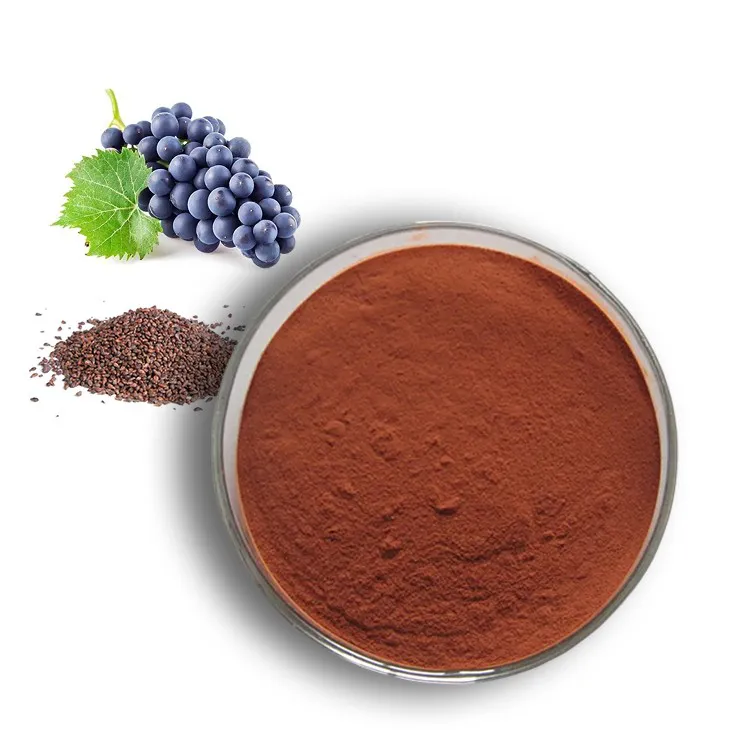
2. Raw Material Selection
2.1 Importance of High - Quality Grape Seeds
The quality of grape seeds used as raw materials is of utmost importance. High - quality grape seeds are more likely to contain a higher concentration of the desired bioactive compounds. These seeds serve as the foundation for the extraction process, and any compromise in their quality can lead to a sub - optimal final product.
2.2 Source of Grape Seeds
Grape seeds are often sourced from specific grape varieties. These varieties are carefully selected for their high content of active compounds. For example, certain wine - grape varieties such as Cabernet Sauvignon and Pinot Noir are known to be rich in bioactive components. Grape seeds from these varieties are more likely to yield a high - quality extract. Additionally, the geographical origin of the grapes can also play a role. Grapes grown in regions with specific soil and climatic conditions may produce seeds with superior qualities.
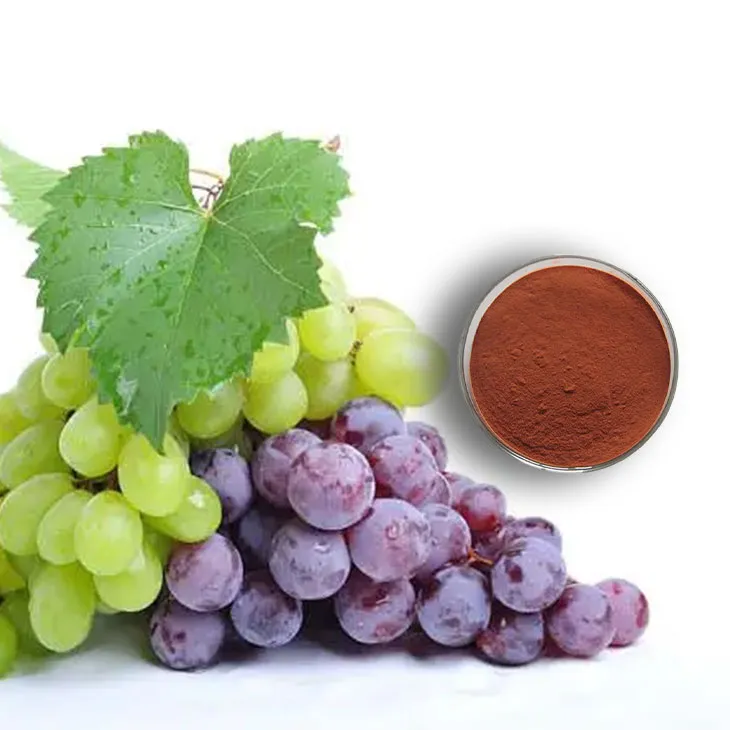
3. Extraction Process
3.1 Solvent Extraction
Solvent extraction is one of the most commonly used methods in the extraction of Grape Seed Extract. Organic solvents are typically employed to dissolve the bioactive components present in the grape seeds.
3.1.1 Choice of Organic Solvents
The choice of organic solvents is crucial. Solvents need to be carefully selected to ensure that they can effectively dissolve the target compounds without introducing harmful residues. Commonly used solvents include ethanol and methanol. Ethanol is often preferred due to its relatively low toxicity and its ability to dissolve a wide range of bioactive components. It is also more acceptable from a regulatory and safety perspective.
3.1.2 Extraction Conditions
During the solvent extraction process, various extraction conditions need to be optimized. These include factors such as temperature, extraction time, and solvent - to - seed ratio. For example, a higher temperature may increase the extraction efficiency to a certain extent, but it may also lead to the degradation of some sensitive bioactive compounds. Therefore, a balance needs to be struck. Similarly, the extraction time should be long enough to ensure sufficient extraction of the compounds, but not so long as to cause unwanted side effects. The solvent - to - seed ratio also affects the extraction efficiency. A higher ratio may result in more complete extraction, but it also increases the cost and complexity of the subsequent purification steps.
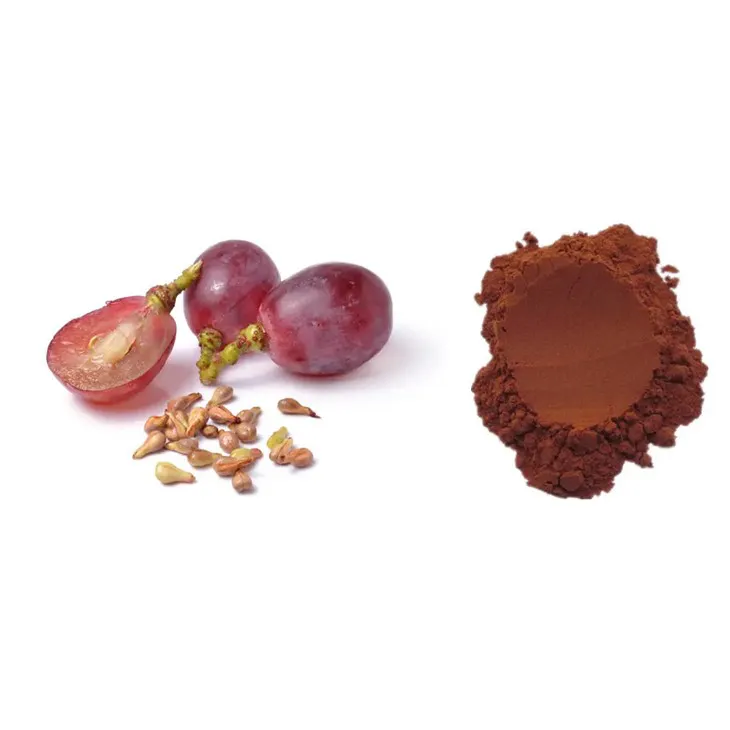
4. Purification Steps
4.1 Filtration
After the extraction process, filtration is an important purification step. Filtration helps to remove large particles and insoluble impurities from the extract. There are different types of filtration methods available, such as vacuum filtration and membrane filtration. Vacuum filtration is a relatively simple and cost - effective method, which is suitable for removing larger particles. Membrane filtration, on the other hand, can be used to remove finer particles and even some macromolecular impurities. It can provide a higher level of purification but may be more expensive.
4.2 Chromatography
Chromatography is another key purification technique used in the production of grape seed extract. There are several types of chromatography methods, including column chromatography and high - performance liquid chromatography (HPLC).
4.2.1 Column Chromatography
Column chromatography is a traditional and widely used method. It involves passing the extract through a column filled with a stationary phase. Different compounds in the extract will interact differently with the stationary phase, resulting in their separation. This method can effectively separate the desired bioactive compounds from other impurities, but it may be relatively time - consuming and labor - intensive.
4.2.2 High - Performance Liquid Chromatography (HPLC)
HPLC is a more advanced and efficient chromatography method. It can achieve a high level of separation and purification in a relatively short time. HPLC is often used for the final purification and analysis of grape seed extract, especially for the quantification and purification of proanthocyanidins, which are one of the most important bioactive components in grape seed extract.
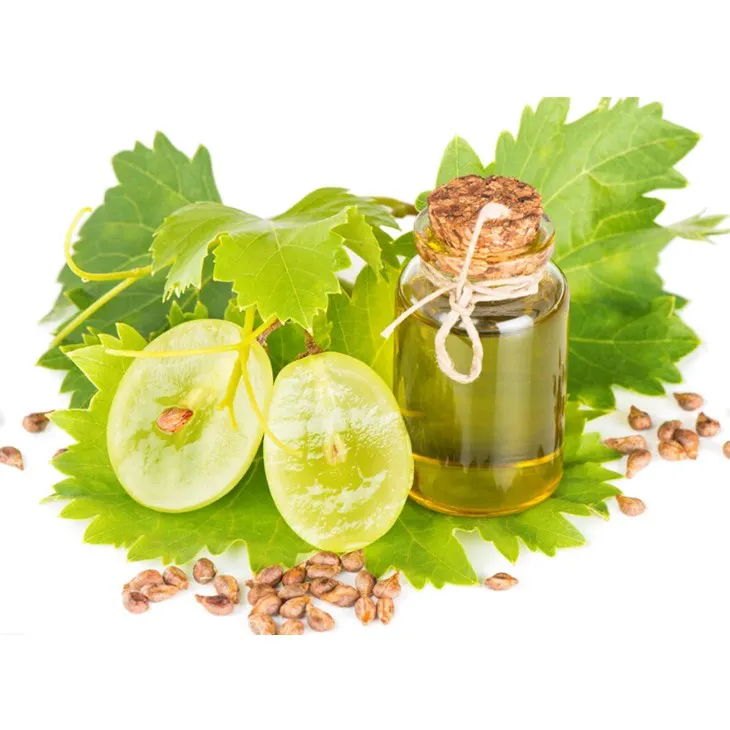
5. Quality Control
Quality control is an integral part of the production process of grape seed extract. It is carried out at every stage of the process to ensure that the final product meets the required safety and efficacy standards.
5.1 Raw Material Quality Control
Before the extraction process, the quality of the grape seeds as raw materials is carefully inspected. This includes checking for factors such as the absence of contaminants, the proper variety identification, and the appropriate moisture content. Only high - quality grape seeds that meet the specified criteria are allowed to enter the extraction process.
5.2 In - process Quality Control
During the extraction and purification processes, in - process quality control measures are implemented. This includes monitoring the extraction conditions such as temperature, time, and solvent - to - seed ratio to ensure that they are within the optimal range. For purification steps like filtration and chromatography, the effectiveness of these processes is continuously evaluated to ensure that the impurities are being removed effectively and the desired compounds are being concentrated.
5.3 Final Product Quality Control
Once the grape seed extract has been produced, a comprehensive set of quality control tests is carried out on the final product. These tests include analysis of the chemical composition, determination of the concentration of bioactive compounds such as proanthocyanidins, and assessment of the safety and stability of the product. The final product must meet strict regulatory requirements and quality standards before it can be released for commercial use.
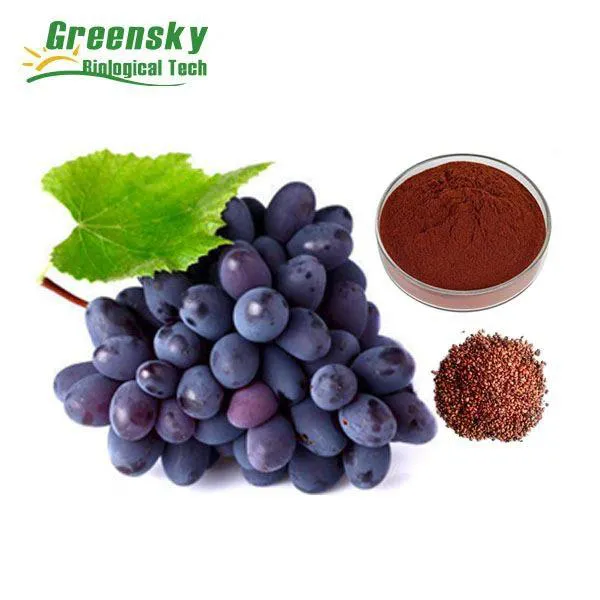
6. Properties of Grape Seed Extract
Grape seed extract is rich in proanthocyanidins, which are responsible for many of its health - promoting properties.
6.1 Antioxidant Properties
Proanthocyanidins in grape seed extract are powerful antioxidants. They can scavenge free radicals in the body, which are unstable molecules that can cause damage to cells and tissues. By neutralizing these free radicals, grape seed extract can help protect the body from oxidative stress, which is associated with various diseases such as cancer, cardiovascular diseases, and neurodegenerative disorders.
6.2 Anti - inflammatory Properties
The anti - inflammatory properties of grape seed extract are also significant. Inflammation is a natural response of the body to injury or infection, but chronic inflammation can lead to many health problems. Grape seed extract can modulate the inflammatory response in the body, reducing the production of inflammatory mediators and thereby helping to prevent and treat inflammatory diseases.
6.3 Cardiovascular - Protective Properties
Grape seed extract has been shown to have beneficial effects on the cardiovascular system. It can help lower blood pressure, improve blood lipid profiles, and prevent the formation of blood clots. These effects are thought to be mediated by its antioxidant and anti - inflammatory properties, as well as other mechanisms that are still being studied.
7. Conclusion
The extraction technology and production process of Natural grape seed extract are complex and multi - faceted. From the careful selection of raw materials to the precise control of extraction and purification processes, and the strict implementation of quality control measures at every stage, all these factors contribute to the production of high - quality grape seed extract. The health - promoting properties of grape seed extract, particularly its antioxidant, anti - inflammatory, and cardiovascular - protective properties, make it a highly desirable ingredient in various products in the health, food, and pharmaceutical industries. Continued research and development in this area are expected to further improve the extraction technology and production process, and expand the applications of grape seed extract in the future.
FAQ:
What are the key factors in raw material selection for grape seed extract?
High - quality grape seeds are crucial. They are often sourced from specific grape varieties that are rich in active compounds. These varieties are selected as they can provide a better source for extracting valuable substances like proanthocyanidins.
Why is solvent extraction commonly used in the extraction of grape seed extract?
Solvent extraction is used because it can effectively dissolve the bioactive components in the grape seeds. By carefully choosing organic solvents, it is possible to extract these components without leaving harmful residues, which is essential for obtaining a high - quality grape seed extract.
What purification steps are involved in the production of grape seed extract?
Filtration and chromatography are common purification steps. Filtration helps to remove larger particles and some impurities. Chromatography is used to further separate and concentrate the desired compounds, ensuring a purer and more effective grape seed extract.
How is quality control ensured during the production process of grape seed extract?
Quality control is carried out at every stage of the production process. This includes monitoring the raw material quality, the extraction process to ensure proper solvent use and extraction efficiency, and the purification steps. The final product is also tested to ensure it meets safety and efficacy standards.
What are the main health benefits of grape seed extract?
The grape seed extract is rich in proanthocyanidins. These compounds have antioxidant, anti - inflammatory, and cardiovascular - protective properties, which contribute to numerous health benefits.
Related literature
- Advances in Grape Seed Extract: Extraction and Health Benefits"
- "Optimization of Grape Seed Extract Production: A Review"
- "The Role of Extraction Technology in the Quality of Grape Seed Extract"
- ▶ Hesperidin
- ▶ citrus bioflavonoids
- ▶ plant extract
- ▶ lycopene
- ▶ Diosmin
- ▶ Grape seed extract
- ▶ Sea buckthorn Juice Powder
- ▶ Beetroot powder
- ▶ Hops Extract
- ▶ Artichoke Extract
- ▶ Reishi mushroom extract
- ▶ Astaxanthin
- ▶ Green Tea Extract
- ▶ Curcumin Extract
- ▶ Horse Chestnut Extract
- ▶ Other Problems
- ▶ Boswellia Serrata Extract
- ▶ Resveratrol Extract
- ▶ Marigold Extract
- ▶ Grape Leaf Extract
- ▶ blog3
- ▶ blog4
-
Wholesale Passion Fruit Extract Suppliers.
2024-11-28
-
Organic Genistein, Australia.
2024-11-28
-
Standard - process Nutmeg extract.
2024-11-28
-
Tinospora cordifolia extract
2024-11-28
-
Golden Seal Extract
2024-11-28
-
Moringa powder
2024-11-28
-
Tormentil Extract
2024-11-28
-
Ginseng Root Extract
2024-11-28
-
Nutmeg Extract
2024-11-28
-
White Peony Extract
2024-11-28
-
Curcumin Extract
2024-11-28
-
Lavender Extract
2024-11-28
-
Cassia Seed Extract
2024-11-28





















